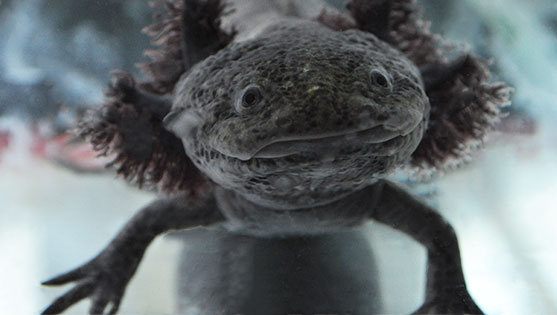The Axolotl has been a model of study over 100 years since it serves as an important vertebrate model for studying regeneration and tissue repair and is the salamander species most easily bred in captivity and for which the most comprehensive genetic, genomic, and transgenesis tools have been developed. Beyond its capacity of regeneration the Axolotl has been focus of attention because it has the special characteristic of retaining the gross morphology of larvae as reproductive adults, a phenomenon known as neoteny or paedomorphosis (Voss et al. 2009, CONABIO, 2011).
In January 2018 the whole genome of the Axolotl was sequenced and assembled by an international group of researchers in which some members of the Molecular and Developmental Complexity Group participated. Today, it is possible to take a closer look on the genome data, you just have to click here.
In January 2018 the whole genome of the Axolotl was sequenced and assembled by an international group of researchers in which some members of the Molecular and Developmental Complexity Group participated. Today, it is possible to take a closer look on the genome data, you just have to click here.

